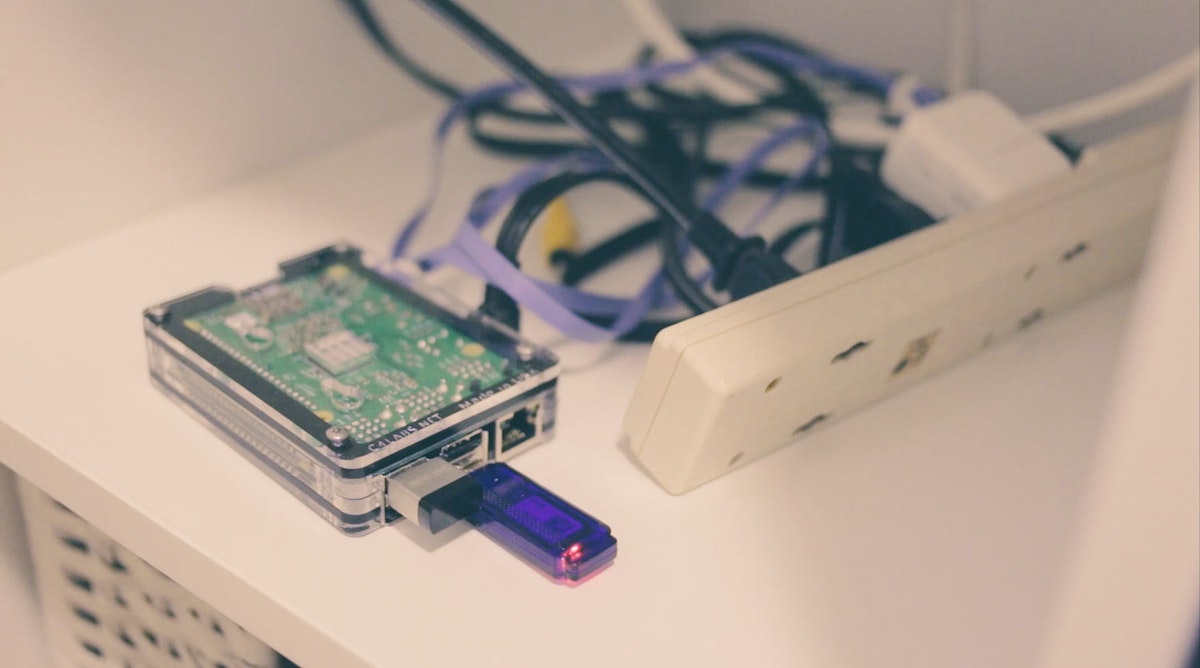Why I’m Building a TV For My Baby

I am making a TV for my future son. It’s nearly finished, though I’m still working out a few kinks in the scheduling API, and I need to solder the hardware channel switcher. It’s a side project that’s been simmering for several months now that I plan to release soon—not unlike my baby.
The idea came to me on a Saturday in June, before I had told anyone I was pregnant. I was flopped out on a sandy couch with my niece and nephew after a day at the beach, their level of post-sun exhaustion matching my first trimester fatigue. Their mom, my sister-in-law, recognized an opportunity to steal away for a shower, and put on an early 80s episode of Mr. Rogers’ Neighborhood. Both of these kids have been raised mostly screen-free, and their mom was just starting to let them watch what she called “slow TV”: mostly nature documentaries, the occasional Aquanauts episode, and of course, Mr. Rogers.
This particular episode began with Fred Rogers trying to fix a leaky faucet with a new rubber washer. But he didn’t have the right size washer, so he goes to visit a local handyman. Rogers asks some questions about a shovel the handyman is fixing, and then is shown a wide selection of washers, and takes his time picking out one of the correct size. This takes place over the course of roughly 10 minutes, in real time. It’s a prime example of “slow.”
My niece and nephew were transfixed, mouths open. Seeing Mr. Rogers select a piece of kitchen hardware appeared to be the most incredible thing they had ever witnessed.
I want the same thing for my son.
I’m a software designer with a background in web development and computer science. I grew up loving computers and the internet. We had an Apple IIE for as long as I can remember, and my engineer dad taught me BASIC as soon as I could read. My first introduction to the internet was when our family got a CompuServe subscription in 1994. I couldn’t do a whole lot on it, but I’d jump into chat rooms and talk about the X-Files and Monty Python. Technology was always a part of my life.
But when I look back on all this, I realize how lucky it was that I got to grow up in this particular moment of technological disruption. I wasn’t plopped into a world governed by technology—the internet’s control over the world grew right along with my own.
Now, though, I keep reading articles about the ways the internet is changing our brains. Social networking is making us more isolated and risk-averse. The current generation of teens growing up, digital natives all, are the safest and the most depressed yet. And I worry about what it will mean for my child, born into a world moving at the speed of Twitter. This anxiety has become more real and intense every week of the 39 I’ve been pregnant. I assume it will let up sometime in the next three or four decades.
Lately, I’ve been thinking a lot about calm technology—a term coined by Mark Weiser and John Seely Brown of Xerox PARC in a 1995 white paper, researched further and developed into a book by Amber Case. Here are the Cliffs Notes: Calm technology should require the smallest amount of attention possible from the user; it stays at the periphery rather than being center stage; and it should “amplify the best of technology and the best of humanity.” It’s that last one that stuck with me.

I don’t have to be a luddite to protect my child—I can use my skills as a technologist, including basic hardware hacking, to moderate the world I want my child to live in. By creating this TV, I can give him the calm environment I was lucky to grow up in. While he’s small, his TV will be a 30-pound, wood-paneled monster that I found the on the street, with a dial and 12 channels he can flip between—no more, no less—all programmed by me. So far, none of the content goes above a PG-rating, and one channel is all Mr. Rogers, pleasantly chatting with his handyman neighbor, carefully choosing just the right washer.
Eventually, my son will know about Netflix and binge-watching. He will know about YouTube and those bizarre AI-generated children’s shows. He will know about games that have been designed by the best minds of our generation to be more addictive than the cigarettes I hope he’ll avoid when he’s older. He will know about so much more that I can’t begin to predict. But for a while, he’ll be blissfully unaware, able to grow and think and develop at a child’s pace.
Words and art

Subscribe

.svg)







